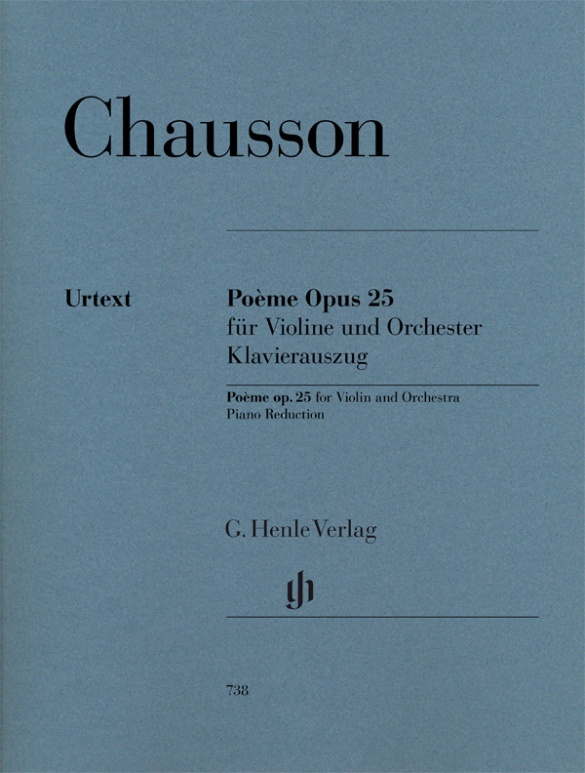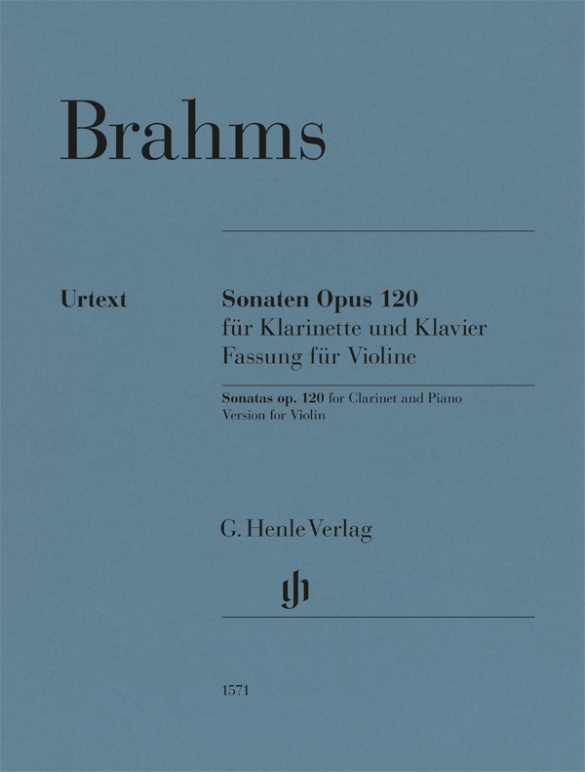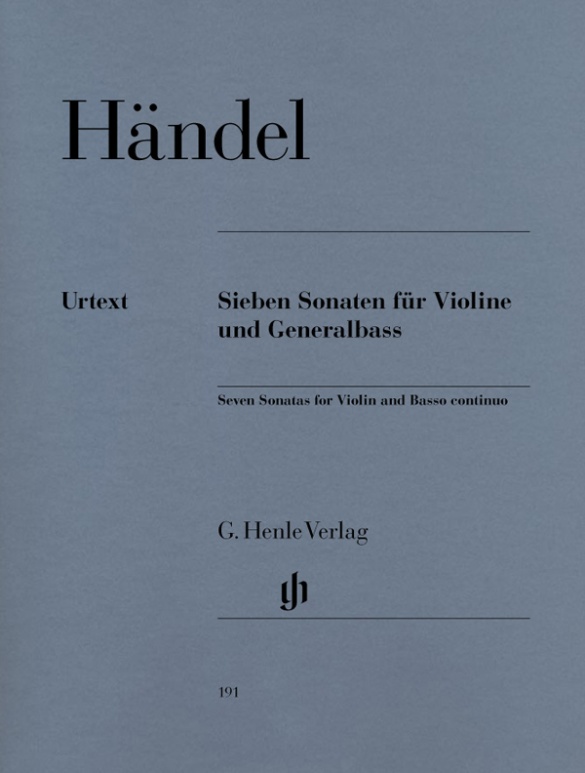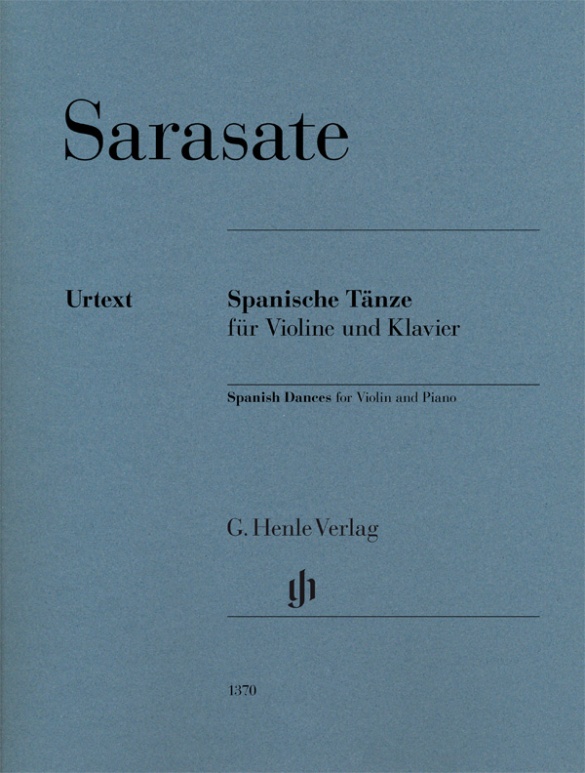Ernest Chausson
Poème for Violin and Orchestra op. 25
Based on a novella by the Russian novelist Ivan Turgenev, Ernest Chausson's Poème for violin and orchestra was originally conceived as a symphonic poem. Gradually, it evolved into a character piece with violin solo, or, to quote the composer, "a piece in very free form with many passages where the violin plays alone." That Chausson’s plan came off to perfection is proved by the work’s ever-growing popularity. The solo part of this Henle volume satisfies the most rigorous criteria of an urtext edition. The piano reduction places a premium on playability and lies better under the fingers than ever before.
内容/詳細
作曲家について
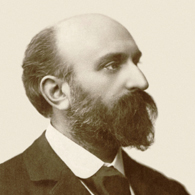
Ernest Chausson
French composer whose compositions are located stylistically at the threshold of Impressionism. He wrote numerous songs, stage works, chamber music, vocal and orchestral works.
| 1855 | Born in Paris on January 20. He receives a comprehensive artistic education (in music, literature, art) from Léon Brethous-Lafargue. |
| around 1865 | He takes piano lessons with Cornélius Coster. |
| from 1874 | In the salon of Madame Berthe de Rayssac, he plays music and is introduced to artistic circles. |
| 1877 | After completing his law studies, he receives an appointment to the Court of Appeal in Paris on May 7. |
| 1878 | He takes private lessons from Jules Massenet. |
| 1880 | At the Conservatoire he enters the composition studio of Jules Massenet, and audits courses with César Franck. |
| 1882 | In Bayreuth he attends a performance of Richard Wagner’s Parsifal that makes a lasting impression on him. There he meets Vincent d’Indy, Ernest Guiraud, and Camille Saint-Saëns, among others. |
| from 1886 | He is secretary of the Société Nationale de Musique in Paris. |
| from 1890 | Socializing in his Paris salon is an elite circle of composers, musicians, painters, and literary figures, among them Stéphane Mallarmé, Colette, Pierre-Auguste Renoir, Édouard Manet, César Franck, Claude Debussy, Paul Dukas, Charles-Marie Widor, Maurice Ravel, Eugène Ysaÿe, Henri Duparc, and Raoul Pugno. |
| 1899 | He dies in Limay on June 10 in a bicycle accident. |
校訂者や運指担当者について

Peter Jost (校訂)
Dr. Peter Jost, born in 1960 in Diefflen/Saar, read musicology, German and comparative studies at Saarland University in Saarbrücken. He did his PhD in 1988 with a thesis on Robert Schumann’s Waldszenen.
From November 1991 to April 2009 he was a research associate at the Richard Wagner Complete Edition in Munich, and since May 2009 has been an editor at G. Henle Publishers. His Urtext editions comprise predominantly French music of the 19th and 20th centuries, including works by Lalo, Saint-Saëns and Ravel.
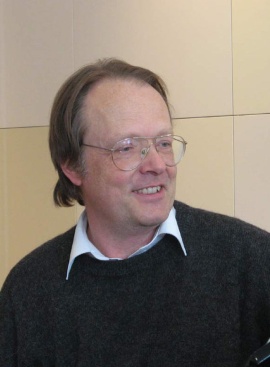
Johannes Umbreit (ピアノ・スコア)
Prof. Johannes Umbreit studied the piano at the Musikhochschule in Munich. From 1987 onwards he was a regular accompanist at courses given by Wolfgang Schneiderhan, Thomas Brandis, Ljerko Spiller, Igor Ozim, Olga Woitowa, Ernő Sebestyén, Walter Nothas, F. Andrejevsky, Denis Zsigmondy and Zakhar Bron amongst others. He has appeared in numerous radio and TV broadcasts and plays chamber music with members of the Bavarian State Orchestra, the Munich Philharmonic Orchestra and the Bavarian Radio Symphony Orchestra.
He is on the jury of different international competitions and has been invited to several international music festivals. Umbreit was a teacher for almost ten years at the Musikhochschule in Munich and at the same time a lecturer for chamber music and piano accompaniment at the Richard Strauss Conservatory. Since 2008 he has been a lecturer at the Hochschule für Musik und Theater München. As the long-serving managing director of the Richard-Strauss-Gesellschaft, he was made an honorary member of the board in 2009. In May 2011, the Bavarian Minister of Culture appointed Johannes Umbreit an honorary professor of the Hochschule für Musik und Theater München on the suggestion of its academic senate.
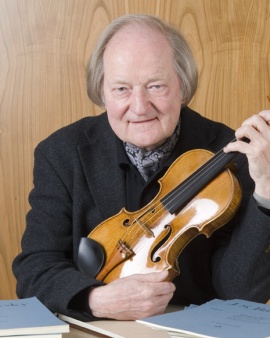
Kurt Guntner (ヴァイオリンの運指とボーイング)
Prof. Kurt Guntner was born in Munich on Mozart’s 183rd birthday. He studied the violin with Ludwig Ackermann, Max Rostal and Henryk Szeryng. At the age of 18, he made his solo debut in the Kongreßsaal at the German Museum in Munich, performing Beethoven’s Violin Concerto with the Munich Philharmonic Orchestra. At the age of 22 he was appointed first concertmaster with the Bavarian State Orchestra. After 10 eventful years at the Bavarian State Opera with conductors such as Ferenc Fricsay, Joseph Keilberth and Hans Knappertsbusch, Rudolf Kempe invited him to become the first concertmaster with the Munich Philharmonic Orchestra, giving him the opportunity to perform the violin solo in many of the great violin concertos.
Of particular appeal were the BR’s invitations to perform and record great violin concertos that were seldom played, including those by Casella, Schillings, Szymanowsky. Kurt Eichhorn initiated this series– Jan Koetsier, Marek Janowski and others conducted other concertos. Kurt Guntner was also first concertmaster with the Bayreuth Festival Orchestra for many years, and played with the Munich Bach Orchestra under Karl Richter, in the Association of Soloists in The Bach Week in Ansbach and with the Münchner Bachsolisten. In 1972 he founded the internationally acclaimed ODEON-TRIO, together with the cellist Angelica May and the pianist Leonard Hokanson, touring all over the world with them for 25 years. In 1976 Guntner was called to the tenured chair of violin at Munich’s Hochschule für Musik und Theater, teaching students from around the world for 28 years.
He made numerous recordings for radio, television, record and CD. Karl Schumann described Guntner’s broad musical personality thus: “Kurt Guntner is a practical orchestral musician, soloist, chamber musician and educator in one person”.
In 1997 Kurt Guntner was awarded the order of merit (first class) of the Federal Republic of Germany.
Kurt Guntner died on 9 January 2015 in Munich.
He was closely associated with G. Henle Publishers for several decades. Since the end of the 1980s he had produced numerous Urtext editions of works for violin for the publishing house, sharing pedagogically polished bowings and fingerings for different works including violin concertos by Bach, Haydn, Mozart, Bruch and Tchaikovsky, as well as numerous other editions.
製品安全に関する情報

G. Henle Verlag
製品の製造元に関する情報はこちらでご覧いただけます。G. Henle Verlag
Forstenrieder Allee 122
81476 München
info@henle.de
www.henle.com
おすすめ
autogenerated_cross_selling
このタイトルを含む他の版


